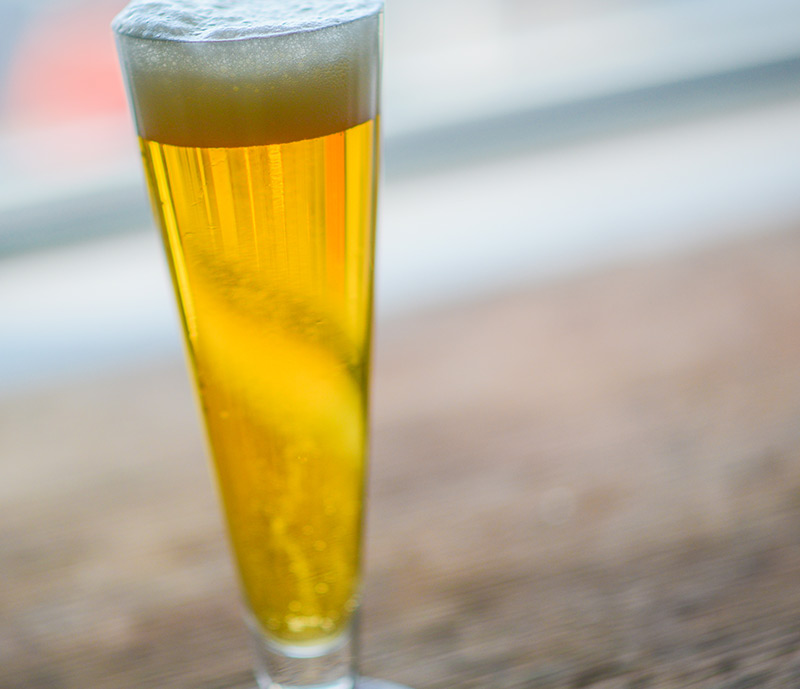
For years, the word lager seemed like a dirty word that homebrewers and craft beer enthusiasts dared not utter in mixed company. I mean, who drinks lager? After all, aren’t craft beer and homebrewing, in part, reactions to Big Beer’s mass-produced commodities? Isn’t lager just ballpark seltzer?
Nope! Curious drinkers who get to know lagers understand that they’re not all fizzy, yellow, and thin. From the lightest helles to the darkest doppelbock, I think there’s a lager out there for everyone. I’ll take a well-crafted Czech-style Pilsner over a session IPA any day!
I love lagers, and I love brewing them. The bother with lager is that brewing authentic examples requires a level of technical precision and control that isn’t always convenient. Even if you use a relaxed method like Mike “Tasty” McDole’s riff on the Narziß protocol (a great method, by the way), you still need to initiate fermentation at around 45–55° F (7–13° C). The schedule is accelerated, yes, but you still need good temperature control to pull it off with Saccharomyces pastorianus.
And even if you do have a temperature-controlled environment, let’s face it. Sometimes we’re lazy and don’t feel like messing with it. Sometimes our lagerators fill with bottles of beer. Or, we grow a year older and find the prospect of lifting 50 pounds of wort into an open chest freezer less than inspiring.
That’s why I love to brew faux lagers. What’s faux lager, you ask? A faux lager is inspired by a lager style but uses an ale yeast at a cooler-than-usual temperature. Late autumn and early winter are great times of year for this because chances are, there’s a spot in or near your house that naturally hovers at or near a suitable temperature.
Here’s how I do it.
- Choose a spot. This is the most important part of the process because the temperature of your fermentation area dictates everything else. This might be a corner of the garage. It might be a basement. It could even be an extra bathroom that doesn’t see any traffic. For me, it’s a home office that, thanks to the peculiarities of an old HVAC system, doesn’t receive as much heat as the rest of the house. This is the same room I use for serving cask-conditioned ales in the winter, which is why I have to wear a coat when I work from home. Ideally, your fermentation area will be 60° F (16° C) or cooler and will maintain a stable temperature (±1–2 degrees) for at least a week or two.
- Choose a yeast. Once you know the temperature at which your beer can ferment, it’s time to select a yeast strain that will work well in those conditions. Kölsch and alt yeasts are fantastic (they’ve been bred for this moment), and California common yeast can be very good, too. Even if I can’t get down as cold as I’d like to, I’ve had luck using certain dry strains like Danstar’s Nottingham and Fermentis’s K-97 in the low 60s with good results. And let’s not forget the AHA’s own Charlie Papazian, who has won countless awards for ales and lagers alike made with his Cry Havoc strain, available from White Labs.
- Choose a beer style. You have a bit of flexibility here, but it pays to know what you’re going for. I find that Kölsch yeast does a great job for the lighter styles (helles, Pilsner, Dortmunder) and that Nottingham can knock out a reasonable dunkel or schwarzbier facsimile if you ferment it in the 55 to 60° F (13 to 16° C) range. If you can find a spot nearer to 50° F (10° C), California common yeasts work well in fake Märzen and Oktoberfest.
- Don’t fret about “lagering.” Yes, the German word lagern means “to store,” and yes, this traditionally takes place at near-freezing temperatures. But you can still turn out a damn fine beer by just walking away from it for a few weeks and allowing it to mature at room temperature. The last time I brewed a standard bock, I used my normal lager fermentation schedule but then forgot to turn the temperature controller back down after a diacetyl rest in the mid-60s Fahrenheit (about 18° C). It remained at that temperature for a good six weeks before I remembered. But I kegged it and put it on tap, and it turned out to be one of the best bocks I had ever brewed. I don’t claim it turned out well because I didn’t lager it the traditional way. But it did turn out well despite my not having done so. What matters most is conditioning. The “cold” part is just the last 5 percent.
If you’ve been scared to give lager a try, I encourage you to dip your toe in the water with faux lager this winter. If you’re an ale devotee, you might just decide to stash away several batches of fake Pilsner to get you through the summer. And if you’ve been brewing traditional lagers for years, you might find yourself breaking the rules and smiling just a little more often.
* * *
Dave Carpenter is editor-in-chief of Zymurgy and author of The Illustrated Guide to Homebrewing. He is an avid homebrewer, an inquisitive traveler, and, despite his surname, an ineffectual woodworker. Dave lives in Fort Collins, Colorado, with his wife, two cats, and countless unfinished projects.


Share Post